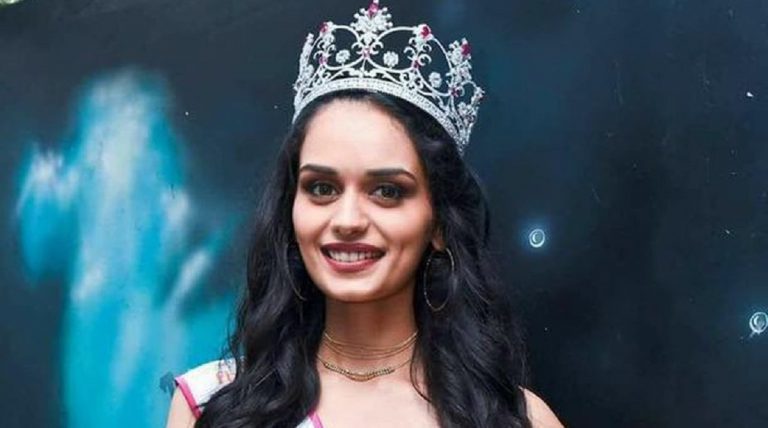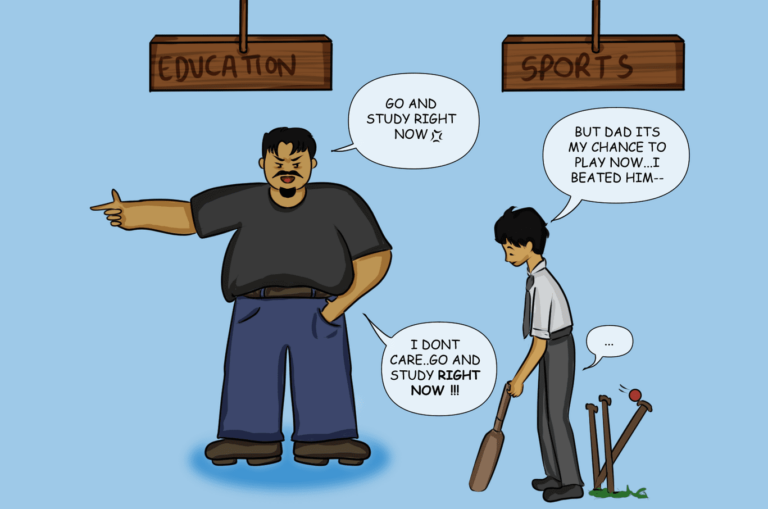The disheartening shadow of Indian cricket on other sports

Puneet Hooda is an aspiring sports analyst and football enthusiast! With more than 10 years experience on the field as a player first and captain later, he has leadership and communication skills engrained in him and patience is his biggest virtue.
Be it the newspapers, media channels, or the streets of India; cricket seems to be one common phenomenon that unites the country. Across its length and breadth from media houses to the roads, cricket as a sport is such a hit amongst Indians that it has sprouted everywhere.
Be it, summer’s time when the blistering sun is overhead, tired and rugged faces of children buzzing, playing and imitating Sachin Tendulkar and Virender Sehwag, or the whole family sitting in front of Television, with bated breaths as Dhoni hits the winning six and the nation erupts in celebration. Next morning the newspapers and channels buzz with headlines of the order, “Dhoni finishes off in style” and “India wins the World Cup.” These are some of the indispensable images which come to mind at the mere mention of the word “sports” in the minds of the Indian Aam Aadmi.
Indian cricket has become a bona fide religion, and cricketers are treated as Gods. Each victory of India is celebrated, and each loss is lamented and discussed. Unlike other sports, cricket has united the country across caste, class, religion, region, and in some cases, even age. An Indian might be utterly naïve about other sports, but s/he would at least know the names of five cricketers. The impact of cricket in the county can be evaluated with the fact that when a kid turns five, the first sports s/he is introduced to is cricket, and usually, their first toy is a Cricket Ball.
Indian cricket: The in-flexion point
One of the primary reasons for this passionate fan following takes us back to the 1983 World Cup. The 1983 Cricket World Cup triumph was transformational in a way it resulted in self-belief and self-realization for the Indian cricket and sports fans in general. It reinforced the idea of nationalism in the minds of the population. Also, it acted as a contrast to the then Indian colonial mindset that we played, and we won against. For Indians, cricket was a sport, a legacy of the British rule, and to win at cricket, meant an end to the imperial mindset, and became a moment of national vindication.
It gave birth to a new athletic Indian, which in the mentality of people could train and win on his own, who was one of “them.” Being an underdog in the tournament, India started their expedition with a win against mighty West Indies at Old Trafford. Many saw this win as a fluke, but the unfolding future revealed that this was the beginning of India’s domination in the world of Cricketing. The win was all the more special since it was on English soil.
Victory, glamour, and popularity
After that, India played different matches and kept building its fan base. The Indian cricket team’s significant achievements include the 2011 World Cup victory. Another milestone for the Indian cricket team was the 2007 ICC Twenty20 World Cup. The first edition of the Twenty20 world cup was held in 2007 in South Africa. It was all Asia finals, where two neighboring countries (India and Pakistan) locked horns. India got the better off Pakistan and won in a bowl out. To widen the reach of twenty20 cricket in the country, IPL (Indian Premier League) was launched by then BCCI vice president Lalit Modi in 2008.
After a detailed study of various sports leagues (English Premier League and NBA) around the world, BCCI created the blueprint and, based on it, launched IPL in 2008. Cricket has undergone umpteen modifications. The introduction of a day-night test match, curtailing of ODI from 60 to 50 overs, wearing jerseys with numbers on the back, etc. But, twenty20 was something new to the audience and was rapid. IPL not only helped India in nurturing young talents but also provided the player’s fame. It was the first commercialization sports league in India. A vast share of IPL success goes to Bollywood celebrities who bought franchises in the league. Shahrukh Khan owns Kolkata Knight Riders, and Priety Zinta owns Kings Eleven Punjab. The current scenario is different if we compare it to the last decade, especially when it comes to sports leagues in India.
After the rampant success of IPL, a number of sports followed cricket’s footpath and introduced leagues in their respective sports. For instance, the Indian Super League (Football), Hockey India League (Hockey), Pro Badminton League (Badminton) are some of the leagues which started after the success of IPL but aren’t as popular as cricket. Since these leagues led to the commercialization of sports, it further resulted in endorsement opportunities for the players. Virat Kohli became the world’s highest-paid athlete in 2018. He is endorsing more than 17 brands presently. The widespread popularity of Indian cricket makes cricketers are favorites among brands for endorsement. This is the reason why only a handful of athletes from other sports are chosen as brand ambassadors.
The plight of other sports in India
While both financial and intellectual investments were being made on cricket, other sports were neglected; therefore, no doubt India acquired a pool position in cricket, but when it comes to overall sports, we are way behind. The sports federation has certainly neglected other sports. There are several players who have brought laurel to the country but didn’t get attention and are ignored by the authorities, or one can say their achievements are overshadowed by cricket.
If we consider the Olympics as one of the parameters to define the caliber of the sport of the country, India has only 28 medals (9 gold, 7 silver, and 12 bronze) in the Olympics. The significant chunk of medals is courtesy of the golden generation of Indian men hockey who won 6 consecutive gold medals between 1928 and 1956. The Indian men hockey team has won total 8 gold, 1 silver and 2 bronze in Olympics i.e. Approximately 43% of the total tally. Lately India’s performance in the Olympics has not been convincing and the last gold medal was won by Abhinav Bindra in 2008.
Since then India has managed to bag a handful of medals only. It’s not like we lack potential or caliber in other sports. We have the potential to conquer the world, but the fact of the day is that the players are not backed and supported by the federations and authorities. They are deprived of the necessary facilities and infrastructure. With such inferior sports culture and facilities, one cannot expect a brilliant performance at the Olympics or international level. For instance, India’s only winter Olympic participant Shiva Keshavan had to raise money for participation all by himself after authorities backed off and left him on his own and the case is similar even for team sports such as Indian ice hockey team is fighting for the sponsors for the last six years.
An unbalanced media
The utmost reason for the unsatisfactory performance in the Olympics is the lack of focus and concentration on games other than cricket. Why should we only blame the governing bodies and federations, Indian media is no different. Today, most channels have specially dedicated slots, and commentators for Indian cricket, Celebrities, and retired players like Virendra Sehwag and Sunil Gavaskar are roped in for analysis and coverage, the game is analyzed ball by ball, but other sports aren’t given such minute attention. For instance, the 15th national Para national games were held in Ghaziabad, and the event is known for a fiasco. In which differently-abled athletes were accommodated in under-construction buildings where there was no drinking water, no sanitation, and all the more no beds to sleep on. This was almost an insult to the athletes of para national games and neither the federations nor the media bat eyelids at issue.
In a study “Coverage of Sports in the Mainstream Print Media: Study of Trends with Special Reference to Cricket,” it was found out that after the 1990s, the pattern of cricket reporting changed from usual hardcore reporting to more of features and articles. Also, post-tournament and off the field reports started to be published in newspapers. In post-tournament coverage of cricket, that space allotted to the sport was high in comparison to post-tournament coverage of other games. Adding to that, it was found out that cricket articles were larger when compared with sports like hockey and athletics.
In a recent independent study, “Cricket celebrated as the only sports in India: An analysis,” two tournaments of cricket and kabaddi concurrently happened, and their coverage in the Indian daily Times of India are analyzed. It was found out that out of the total articles published (Between 3rd to 17th August 2019), 51% share was given to sports other than cricket and kabaddi. Cricket was given a 43% share. Clearly, there is a domination of cricket when it comes to sports news. It was found out that news on cricket is mostly printed on the main page of the sports portion in major newspapers. Pictures also play a significant role in attracting readers and building public image. In most of the news of Indian cricket, pictures are used, but other sports don’t get that luxury. Spacing is one of the main problems in the print media, and space allocation needs to be properly done to ensure all the news are placed in perfect order. A large portion of space is given to cricket.
Financial crunch in other sports
It is just not the media which was giving unfair treatment to other games and was biased towards cricket. Our society, in general, privileges cricketers as there are temples dedicated to cricketers like Tendulkar and Kapil Dev, and winners of other sports don’t even get cabs. This sounds a little extreme but sadly is a reality of today, a reality faced by the Indian Women Kabaddi Team. Indian women Kabaddi team is the undisputed world champion. In 2012 when the team returned to India after the triumph, there were no flowers or red carpet for them at the airport. The world champions had to hitch cabs to return home. Despite conquering the world, they were disparaged by the authorities.
Sportspersons cherish their gear/equipment the most, and it is the last thing they want to lose. Indian Archery player Nisha Rani Dutt won a Bronze in the Bangkok Grand Prix back in 2008. Her career was going in the right direction until her financial condition trashed her dreams, and she was forced to cut off. Her monthly Stipend of Rs.500 was not enough for her family’s survival, and she had to sell her sports equipment to support her family. The careless attitude of authorities led India to lose one more star.
Mizoram: A ray of hope
While the image appears bleak, there is a ray of hope with some states of the North East like Manipur and Mizoram. They are investing and developing talent in the country with specially dedicated schools for weight lifting, boxing, shooting, etc. Veteran pugilist Mary Kom, Weightlifter Sushila Chanu and Mirabai Chanu all hail from Manipur. Five-time world champion Mary Kom recently inaugurated boxing academy in Manipur to identify and nurture the talent. On the other hand, Mizoram has one of the best weightlifting academies in India. Mizoram’s 18 years old Jeremy Lalrinnunga won the Gold Medal in 62kg men weightlifting in the Youth Olympics. And the credit goes to investments made by the state government in the infrastructure and facilities for the players.
Mizoram also has a thriving local football league i.e., Mizoram Premier League (MPL). The impact of the league can be easily seen as players like Lalpekhlua, Lalrindika Ralte, Lalchhuanmawia Fanai, Jerry Lalrinzuala, Lalruatthara, etc. have represented India and played in the elite clubs of India. Ngangom Bala Devi of Manipur became the first Indian woman pro-footballer when she signed an 18-month deal with the Scottish club, Rangers FC.
The way ahead
To dissolve the imparity between cricket and other sports state governments in tandem, the center needs to invest in sports and provide superior facilities to the players. They need to focus on Grassroots, identify the talent, and grind it for future challenges. Reliance Foundation (Football) has made a good start and is focusing on grassroots. They organize trails all over India to select the best talent and provide them free education, stay, and extraordinary facilities. More academies like reliance foundation are the need of the hour if we need to minimize the gap between cricket and non-cricket sports.
Featured Image Credits: Wikimedia









A good detailed article bhai covers almost every point. I was reading it by keeping in mind that you are a footballer and would give football all the limelight of your article but by the conclusion I found that you talked about every aspect of sports and football was given needful priority only . Great article bhai ??